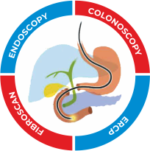Abdominal pain can be a distressing symptom, and when it strikes, it’s essential to identify its cause promptly. Two common conditions that can cause abdominal pain are appendicitis and gallbladder disease. Distinguishing between the two is crucial, as their treatment approaches differ. In this article, we will explore the key differences in symptoms, diagnosis, and treatment of appendicitis and gallbladder disease. If you’re experiencing abdominal pain and are in the Sirsa area, consult a Gastrologist in Sirsa or visit a Gastroenterologist Hospital in Sirsa for expert guidance from Top Gastroenterologists.
Appendicitis:
Appendicitis is the inflammation of the appendix, a small pouch-like organ located in the lower right abdomen. It can be a medical emergency if left untreated. Key symptoms of appendicitis include:
1. Localized Pain: Appendicitis pain typically begins around the navel and migrates to the lower right abdomen, becoming more intense over time.
2. Nausea and Vomiting: Patients often experience nausea and may vomit due to the pain.
3. Loss of Appetite: A significant decrease in appetite is common.
4. Fever: A low-grade fever may accompany appendicitis.
Diagnosis and Treatment of Appendicitis:
Diagnosing appendicitis involves a physical examination, blood tests, and imaging studies such as ultrasound or CT scans. If appendicitis is confirmed, prompt surgical removal of the appendix (appendectomy) is necessary to prevent complications like a ruptured appendix. This procedure is typically performed laparoscopically, resulting in a shorter recovery period.
Gallbladder Disease:
Gallbladder disease refers to conditions affecting the gallbladder, a small organ that stores bile. Gallstones and inflammation (cholecystitis) are common gallbladder issues. Symptoms of gallbladder disease include:
1. Upper Right Abdominal Pain: Pain is usually felt in the upper right quadrant of the abdomen, under the ribcage.
2. Pain After Meals: Pain often worsens after consuming fatty or heavy meals.
3. Nausea and Vomiting: Similar to appendicitis, gallbladder disease can cause nausea and vomiting.
4. Jaundice: In severe cases, yellowing of the skin and eyes (jaundice) can occur.
Diagnosis and Treatment of Gallbladder Disease:
Diagnosis of gallbladder disease involves imaging tests like ultrasound or a CT scan. In most cases, gallstones are treated with surgical removal of the gallbladder (cholecystectomy). This procedure is often performed laparoscopically, resulting in a relatively short recovery period. Without a gallbladder, the body adapts to digesting fat, and most people can lead normal lives after surgery.
Conclusion:
While appendicitis and gallbladder disease share some common symptoms, they have distinct characteristics and require different treatment approaches. If you experience abdominal pain and suspect one of these conditions, consult a medical professional, especially if you are in the Sirsa area. Seek guidance or visit a Gastroenterologist Hospital in Sirsa to receive expert care from Top Gastroenterologists in Sirsa. Early diagnosis and appropriate treatment are essential for a swift recovery and the prevention of complications in both cases.







